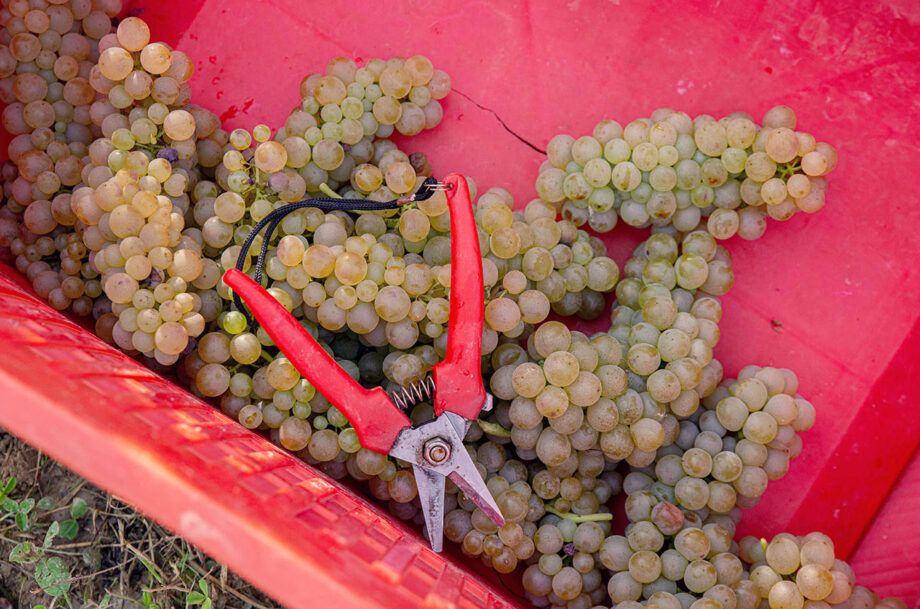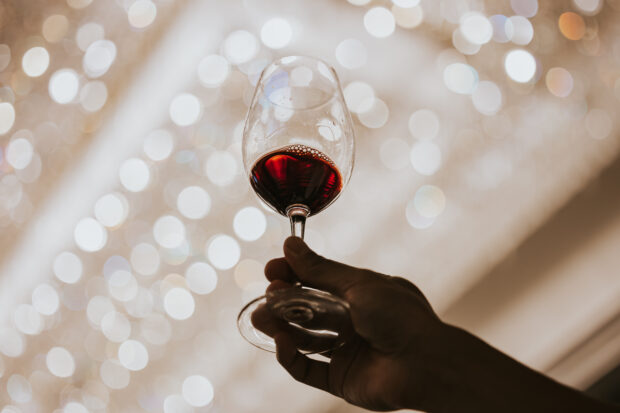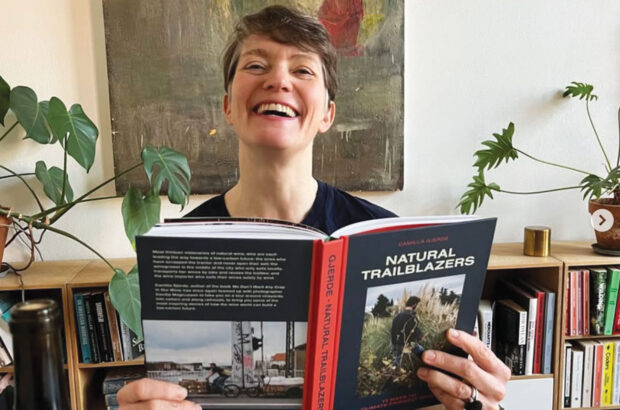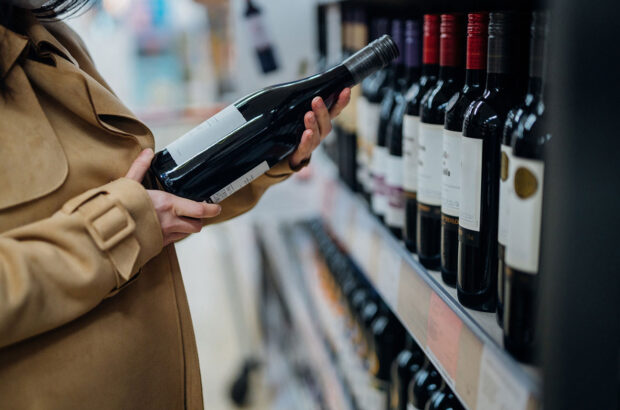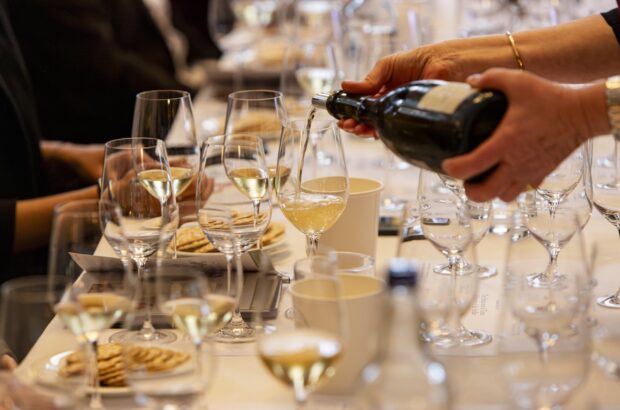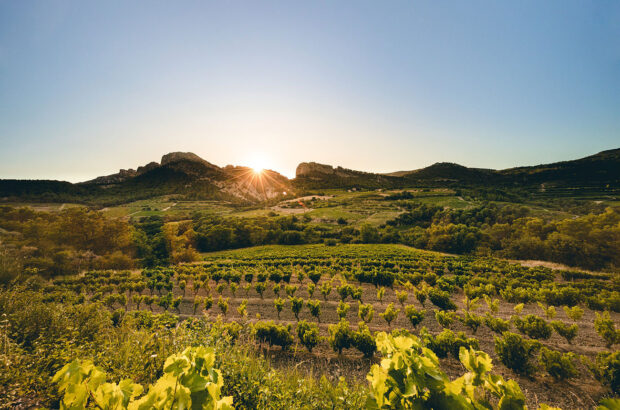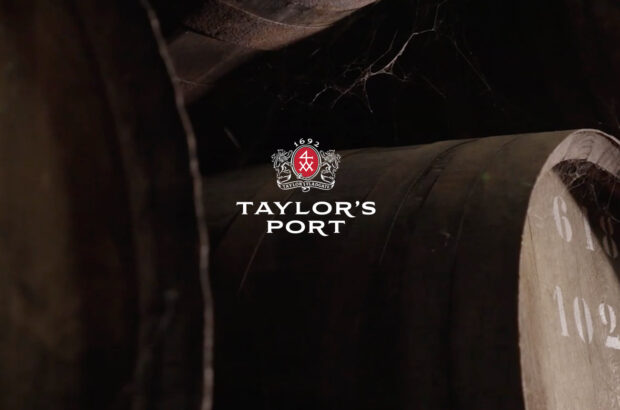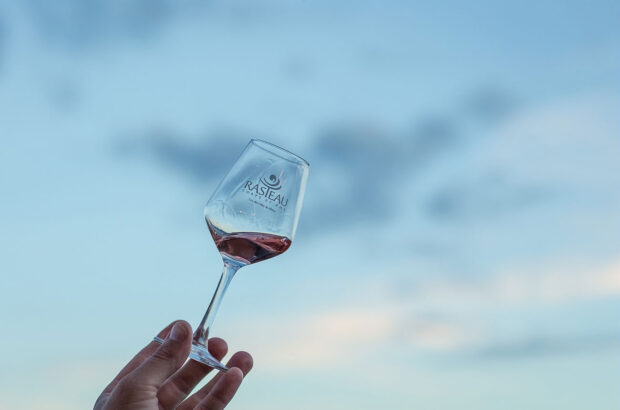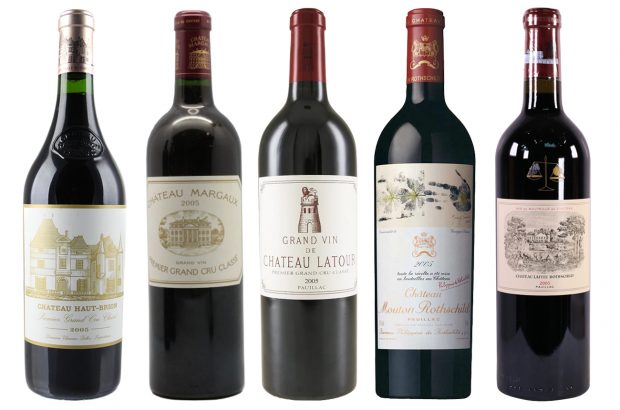With the release of the 2023 vintage, Gaja’s ‘Gaia & Rey’ Chardonnay turns 40 – a symbolic milestone for a pioneering wine. It was the first white produced by the renowned Barbaresco winery, the first Chardonnay to be born in the Langhe, and the first Italian white wine to undergo malolactic fermentation and ageing in barrique.
The wine’s label combines the name of owner Angelo Gaja’s grandmother, Clotilde Rey, and that of his firstborn, Gaia, born in 1979 (the very year the Chardonnay vineyard was planted in Treiso), representing the company’s roots and its future.
On its release, it seemed outright futuristic.
Find out more about the evolution of Gaja’s Gaia & Rey Chardonnay
{"content":"PHA+SW4gdGhlIExhbmdoZSBhdCB0aGF0IHRpbWUsIGZhcm1lcnMgY291bGRu4oCZdCBldmVuIHByb25vdW5jZSB0aGUgd29yZCBDaGFyZG9ubmF5LCB3aGlsZSBQaWVkbW9udCB3YXMganVzdCBiZWdpbm5pbmcgdG8gbWFrZSBpdHMgbmFtZSB0aGFua3MgdG8gQmFyYmFyZXNjbyBhbmQsIGFib3ZlIGFsbCwgQmFyb2xvLjwvcD4KPHA+SW4gSXRhbHksIHdoaXRlIHdpbmVzIHdlcmUgY29uc2lkZXJlZCBzaW1wbGUgcHJvZHVjdHMgZm9yIGltbWVkaWF0ZSBjb25zdW1wdGlvbiBhbmQgYnkgdGhlIGVuZCBvZiB0aGUgc3ByaW5nIHRoZXkgd291bGQgYWxsIGJlIHNvbGQgb3V0LjwvcD4KPHA+PGRpdiBjbGFzcz0iYWQtY29udGFpbmVyIGFkLWNvbnRhaW5lci0tbW9iaWxlIj48ZGl2IGlkPSJwb3N0LWlubGluZS0yIiBjbGFzcz0iaXBjLWFkdmVydCI+PC9kaXY+PC9kaXY+PC9wPgo8cD7igJtCdXQgSSBiZWxpZXZlZCB0aGF0IHRoZSBMYW5naGUgcmVnaW9uIG9mZmVyZWQgdGhlIHJpZ2h0IGNoYXJhY3RlcmlzdGljcyB0byBwcm9kdWNlIGEgY29tcGxleCwgbG9uZy1saXZlZCB3aGl0ZSzigJkgcmVjYWxscyBBbmdlbG8gR2FqYS4g4oCbV2hhdCBpbnNwaXJlZCBtZSB3YXMgbXkgbWVldGluZyB3aXRoIFJvYmVydCBNb25kYXZpLCB3aG8gd2FudGVkIHRvIG1ha2UgZ3JlYXQgd2hpdGUgd2luZXMgaW4gTmFwYSBWYWxsZXksIGVtdWxhdGluZyBCdXJndW5keS4gSSBsaWtlZCBoaXMgb3Blbi1taW5kZWRuZXNzIGFuZCByZXNvdXJjZWZ1bG5lc3Mu4oCZPC9wPgo8cD5HYWlhICZhbXA7IFJleSB3YXMgcmVsZWFzZWQgcXVpZXRseSBhcyBhIHRhYmxlIHdpbmUsIGJ1dCBpdCBxdWlja2x5IGJ1aWx0IGEgbG95YWwgZm9sbG93aW5nLCBlc3BlY2lhbGx5IGFicm9hZCwgc3VycHJpc2luZ2x5IGNvbXBsZW1lbnRpbmcgdGhlIHN1bXB0dW91cyBHYWphIHJlZHMuIFRvZGF5LCBpdCBpcyBpbmNsdWRlZCBpbiB0aGUgTGFuZ2hlIERPQy4gR2l2ZW4gaXRzIHN1Y2Nlc3MsIG90aGVyIHByb2R1Y2VycyBpbiB0aGUgTGFuZ2hlIGJlZ2FuIHRvIGNvbnNpZGVyIGZvbGxvd2luZyBpbiBpdHMgZm9vdHN0ZXBzLjwvcD4KPGgyPkhvdyBpdCBzdGFydGVkPC9oMj4KPGRpdiBpZD0iYXR0YWNobWVudF81NjczOTEiIHN0eWxlPSJ3aWR0aDogMTMxMHB4IiBjbGFzcz0id3AtY2FwdGlvbiBhbGlnbmNlbnRlciI+PGltZyBmZXRjaHByaW9yaXR5PSJoaWdoIiBkZWNvZGluZz0iYXN5bmMiIGFyaWEtZGVzY3JpYmVkYnk9ImNhcHRpb24tYXR0YWNobWVudC01NjczOTEiIGNsYXNzPSJsYXp5bG9hZCBibHVyLXVwIHdwLWltYWdlLTU2NzM5MSBzaXplLWZ1bGwiIGRhdGEtcHJvY2Vzc2VkIHNyYz0iaHR0cHM6Ly93d3cuZGVjYW50ZXIuY29tLm1hc3Rlci5wdWJsaWMua2V5c3RvbmUtcHJvZC1la3MtZXV3MS5mdXR1cmVwbGMuZW5naW5lZXJpbmcvd3AtY29udGVudC90aGVtZXMvc2ltYmEtdGhlbWUvYXNzZXRzL2ltYWdlcy9wbGFjZWhvbGRlci5wbmciIGRhdGEtc3JjPSJodHRwczovL2tleWFzc2V0cy50aW1laW5jdWsubmV0L2luc3BpcmV3cC9saXZlL3dwLWNvbnRlbnQvdXBsb2Fkcy9zaXRlcy8zNC8yMDI1LzEwL0FuZ2Vsby1HYWphLWUtR2l1ZG8tUml2ZWxsYS0xOTg2LmpwZyIgYWx0PSJBbmdlbG8gR2FqYSBhbmQgR3VpZG8gUml2ZWxsYSAxOTg2IiB3aWR0aD0iMTMwMCIgaGVpZ2h0PSI4NjAiIGRhdGEtc2l6ZXM9ImF1dG8iIGRhdGEtc3Jjc2V0PSJodHRwczovL2tleWFzc2V0cy50aW1laW5jdWsubmV0L2luc3BpcmV3cC9saXZlL3dwLWNvbnRlbnQvdXBsb2Fkcy9zaXRlcy8zNC8yMDI1LzEwL0FuZ2Vsby1HYWphLWUtR2l1ZG8tUml2ZWxsYS0xOTg2LmpwZyAxMzAwdywgaHR0cHM6Ly9rZXlhc3NldHMudGltZWluY3VrLm5ldC9pbnNwaXJld3AvbGl2ZS93cC1jb250ZW50L3VwbG9hZHMvc2l0ZXMvMzQvMjAyNS8xMC9BbmdlbG8tR2FqYS1lLUdpdWRvLVJpdmVsbGEtMTk4Ni0zMDB4MTk4LmpwZyAzMDB3LCBodHRwczovL2tleWFzc2V0cy50aW1laW5jdWsubmV0L2luc3BpcmV3cC9saXZlL3dwLWNvbnRlbnQvdXBsb2Fkcy9zaXRlcy8zNC8yMDI1LzEwL0FuZ2Vsby1HYWphLWUtR2l1ZG8tUml2ZWxsYS0xOTg2LTYzMHg0MTcuanBnIDYzMHcsIGh0dHBzOi8va2V5YXNzZXRzLnRpbWVpbmN1ay5uZXQvaW5zcGlyZXdwL2xpdmUvd3AtY29udGVudC91cGxvYWRzL3NpdGVzLzM0LzIwMjUvMTAvQW5nZWxvLUdhamEtZS1HaXVkby1SaXZlbGxhLTE5ODYtMTM1eDg5LmpwZyAxMzV3LCBodHRwczovL2tleWFzc2V0cy50aW1laW5jdWsubmV0L2luc3BpcmV3cC9saXZlL3dwLWNvbnRlbnQvdXBsb2Fkcy9zaXRlcy8zNC8yMDI1LzEwL0FuZ2Vsby1HYWphLWUtR2l1ZG8tUml2ZWxsYS0xOTg2LTMyMHgyMTIuanBnIDMyMHcsIGh0dHBzOi8va2V5YXNzZXRzLnRpbWVpbmN1ay5uZXQvaW5zcGlyZXdwL2xpdmUvd3AtY29udGVudC91cGxvYWRzL3NpdGVzLzM0LzIwMjUvMTAvQW5nZWxvLUdhamEtZS1HaXVkby1SaXZlbGxhLTE5ODYtNjIweDQxMC5qcGcgNjIwdywgaHR0cHM6Ly9rZXlhc3NldHMudGltZWluY3VrLm5ldC9pbnNwaXJld3AvbGl2ZS93cC1jb250ZW50L3VwbG9hZHMvc2l0ZXMvMzQvMjAyNS8xMC9BbmdlbG8tR2FqYS1lLUdpdWRvLVJpdmVsbGEtMTk4Ni05MjB4NjA5LmpwZyA5MjB3LCBodHRwczovL2tleWFzc2V0cy50aW1laW5jdWsubmV0L2luc3BpcmV3cC9saXZlL3dwLWNvbnRlbnQvdXBsb2Fkcy9zaXRlcy8zNC8yMDI1LzEwL0FuZ2Vsby1HYWphLWUtR2l1ZG8tUml2ZWxsYS0xOTg2LTEyMjB4ODA3LmpwZyAxMjIwdyIgc2l6ZXM9IihtYXgtd2lkdGg6IDEzMDBweCkgMTAwdncsIDEzMDBweCIgLz48cCBpZD0iY2FwdGlvbi1hdHRhY2htZW50LTU2NzM5MSIgY2xhc3M9IndwLWNhcHRpb24tdGV4dCI+QW5nZWxvIEdhamEgYW5kIHdpbmVtYWtlciBHdWlkbyBSaXZlbGxhIGluIDE5ODYuIENyZWRpdDogR2FqYTwvcD48L2Rpdj4KPGRpdiBjbGFzcz0iYWQtY29udGFpbmVyIGFkLWNvbnRhaW5lci0tbW9iaWxlIj48ZGl2IGlkPSJwb3N0LWlubGluZS0zIiBjbGFzcz0iaXBjLWFkdmVydCI+PC9kaXY+PC9kaXY+CjxwPkFjY29yZGluZyB0byBhIHJlcG9ydCBieSB0aGUgTm9taXNtYSByZXNlYXJjaCBpbnN0aXR1dGUgb24gSXRhbGlhbiBjb25zdW1lciBwZXJjZXB0aW9uLCBQaWVkbW9udCBpcyB0aGUgbGVhZGluZyBJdGFsaWFuIHJlZ2lvbiBmb3IgdGhlIHByb2R1Y3Rpb24gb2YgcXVhbGl0eSByZWQgd2luZXMsIHRoZSBmb3VydGggZm9yIHNwYXJrbGluZyB3aW5lcywgYnV0IG9ubHkgc2l4dGggZm9yIHN0aWxsIHdoaXRlIHdpbmVzLjwvcD4KPHA+QXN0aSBET0NHIGlzIGJ5IGZhciB0aGUgaGlnaGVzdCBwcm9kdWN0aW9uIFBpZWRtb250ZXNlIHdpbmUgKDkwIG1pbGxpb24gYm90dGxlcyBwZXIgeWVhciBvZiBzcGFya2xpbmcgd2luZSBhbmQgTW9zY2F0byBk4oCZQXN0aSksIGFuZCBudW1lcm91cyBvdGhlciBkaXN0cmljdHMgYXJlIGRyaXZlbiBieSB3aGl0ZSB3aW5lcywgc3VjaCBhcyBHYXZpLCBSb2VybyBBcm5laXMsIEVyYmFsdWNlIGRpIENhbHVzbywgYW5kIERlcnRob25hIFRpbW9yYXNzby48L3A+CjxkaXYgY2xhc3M9ImFkLWNvbnRhaW5lciBhZC1jb250YWluZXItLW1vYmlsZSI+PGRpdiBpZD0icG9zdC1pbmxpbmUtNCIgY2xhc3M9ImlwYy1hZHZlcnQiPjwvZGl2PjwvZGl2Pgo8cD5UaGlzIHBlcmNlcHRpb24gaXMgbGFyZ2VseSBpbmZsdWVuY2VkIGJ5IHRoZSBzdWNjZXNzIG9mIEJhcm9sbyBhbmQgQmFyYmFyZXNjbywgYnV0IGl0IGNvdWxkIGNoYW5nZS4g4oCbV2UgYmVsaWV2ZSB0aGUgZnV0dXJlIG9mIHdpbmUgbGllcyBhdCBoaWdoZXIgYWx0aXR1ZGVzLCBhbmQgd2Ugc2VlIGl0IGFzIHdoaXRlcizigJkgR2FpYSBHYWphIGJlYW1zLjwvcD4KPHA+PHNwYW4gc3R5bGU9ImZvbnQtc2l6ZTogMTZweCI+U2hl4oCZcyByZWZlcnJpbmcgdG8gaGVyIGZhbWlseeKAmXMgbGF0ZXN0IGJ1c2luZXNzIHByb2plY3Q6IHRoZSBhY3F1aXNpdGlvbiBvZiAzMCBoZWN0YXJlcyBvZiBsYW5kIGluIHRoZSBtdW5pY2lwYWxpdHkgb2YgVHJlenpvIFRpbmVsbGEsIG1vc3RseSBwbGFudGVkIHdpdGggQ2hhcmRvbm5heSBhbmQgU2F1dmlnbm9uIOKAkyBncmFwZSB2YXJpZXRpZXMgd2l0aCB3aGljaCBHYWphIGJvYXN0cyBzb2xpZCBleHBlcmllbmNlIChpbiBhZGRpdGlvbiB0byBHYWlhICZhbXA7IFJleSwgdGhlIHdpbmVyeSBwcm9kdWNlcyBTYXV2aWdub24gQWx0ZW5pIGRpIEJyYXNzaWNhIGFuZCB0aGUgQ2hhcmRvbm5heS1TYXV2aWdub24gYmxlbmQsIFJvc3NqLUJhc3MpLjwvc3Bhbj48L3A+CjxkaXYgY2xhc3M9ImFkLWNvbnRhaW5lciBhZC1jb250YWluZXItLW1vYmlsZSI+PGRpdiBpZD0icG9zdC1pbmxpbmUtNSIgY2xhc3M9ImlwYy1hZHZlcnQiPjwvZGl2PjwvZGl2Pgo8cD5UcmV6em8gVGluZWxsYSBpcyBsb2NhdGVkIGEgZmV3IGJlbmRzIGFib3ZlIEJhcmJhcmVzY28sIGp1c3QgZW5vdWdoIHRvIHJpc2UgZnJvbSAzMDAgdG8gNjAwIG1ldHJlcyBhYm92ZSBzZWEgbGV2ZWwgYW5kIGJlbmVmaXQgZnJvbSBhIGRlY2lkZWRseSBjb29sZXIgbWljcm9jbGltYXRlLiBUaGUgc29pbHMgYWx0ZXJuYXRlIGJldHdlZW4gc2FuZCBhbmQgc3RvbmUuPC9wPgo8cD7igJhJdOKAmXMgYSB2aXJnaW4gcGxhY2UgZm9yIHZpdGljdWx0dXJlLCB3aGljaCBpcyB3aHkgd2XigJlyZSBleHRlbmRpbmcgdGhlIGV4cGVyaW1lbnRhbCBwaGFzZS7igJkgRm9yIGhpcyBwYXJ0IEFuZ2VsbyBHYWphIGtub3dzIHdlbGwgdGhhdCBhIHRlcnJvaXIgaXNu4oCZdCBjcmVhdGVkIG92ZXJuaWdodCBhbmQgY29uZmlybXMgdGhhdCBoZeKAmXMgaW4gbm8gcnVzaC48L3A+CjxwPkluIHRoZSBtZWFudGltZSwgdGhlIEdhamEgZmFtaWx54oCZcyBpbnZlc3RtZW50IGNvdWxkIGluc3BpcmUgb3RoZXJzIHRvIGZvbGxvdyBpbiB0aGVpciBmb290c3RlcHMgYW5kIGhlbHAgaW1wcm92ZSBQaWVkbW9udOKAmXMgcmVwdXRhdGlvbiBhcyBhIHdoaXRlIHdpbmUgcmVnaW9uLjwvcD4KPGhyPgo8ZGl2IGNsYXNzPSJicmVha291dCBwYWxldHRlLWEgcGFuZWwgcGFuZWwtZGVmYXVsdCI+PGRpdiBjbGFzcz0icGFuZWwtYm9keSI+PGRpdiBjbGFzcz0nYnJlYWtvdXQtY29udGVudCc+PC9wPgo8aDMgc3R5bGU9InRleHQtYWxpZ246IGNlbnRlciI+SXRhbHkgbmV3c2xldHRlcjogU2lnbiB1cCB0b2RheTwvaDM+CjxwIHN0eWxlPSJ0ZXh0LWFsaWduOiBjZW50ZXIiPkdldCB0aGUgYmVzdCByZWNvbW1lbmRhdGlvbnMsIHZpbnRhZ2UgYW5hbHlzaXMsIHJlZ2lvbmFsIGFuZCBjdWx0dXJhbCBpbnNpZ2h0cyBhbmQgbW9yZSBkZWxpdmVyZWQgdG8geW91ciBpbmJveCBvbmNlIGEgbW9udGgsIGhlbHBpbmcgeW91IHRvIHN0YXkgdXAtdG8tZGF0ZSB3aXRoIHRoZSBsYXRlc3QgaW4gSXRhbGlhbiB3aW5lLjwvcD4KPHA+PGEgaHJlZj0iaHR0cHM6Ly93d3cuZGVjYW50ZXIuY29tLm1hc3Rlci5wdWJsaWMua2V5c3RvbmUtcHJvZC1la3MtZXV3MS5mdXR1cmVwbGMuZW5naW5lZXJpbmcubWFzdGVyLnB1YmxpYy5rZXlzdG9uZS1wcm9kLWVrcy1ldXcxLmZ1dHVyZXBsYy5lbmdpbmVlcmluZy9kZWNhbnRlci1pdGFseS1uZXdzbGV0dGVyLyIgdGFyZ2V0PSJfYmxhbmsiIHJlbD0ibm9vcGVuZXIiPjxpbWcgZGVjb2Rpbmc9ImFzeW5jIiBjbGFzcz0ibGF6eWxvYWQgYmx1ci11cCBhbGlnbmNlbnRlciBzaXplLWZ1bGwgd3AtaW1hZ2UtNTU3MDg3IiBkYXRhLXByb2Nlc3NlZCBzcmM9Imh0dHBzOi8vd3d3LmRlY2FudGVyLmNvbS5tYXN0ZXIucHVibGljLmtleXN0b25lLXByb2QtZWtzLWV1dzEuZnV0dXJlcGxjLmVuZ2luZWVyaW5nL3dwLWNvbnRlbnQvdGhlbWVzL3NpbWJhLXRoZW1lL2Fzc2V0cy9pbWFnZXMvcGxhY2Vob2xkZXIucG5nIiBkYXRhLXNyYz0iaHR0cHM6Ly9rZXlhc3NldHMudGltZWluY3VrLm5ldC9pbnNwaXJld3AvbGl2ZS93cC1jb250ZW50L3VwbG9hZHMvc2l0ZXMvMzQvMjAyNS8wNS9CdXR0b24tc2lnbi11cC0xLnBuZyIgYWx0PSJCdXR0b24gc2lnbiB1cCIgd2lkdGg9IjgwMCIgaGVpZ2h0PSI4MCIgZGF0YS1zaXplcz0iYXV0byIgZGF0YS1zcmNzZXQ9Imh0dHBzOi8va2V5YXNzZXRzLnRpbWVpbmN1ay5uZXQvaW5zcGlyZXdwL2xpdmUvd3AtY29udGVudC91cGxvYWRzL3NpdGVzLzM0LzIwMjUvMDUvQnV0dG9uLXNpZ24tdXAtMS5wbmcgODAwdywgaHR0cHM6Ly9rZXlhc3NldHMudGltZWluY3VrLm5ldC9pbnNwaXJld3AvbGl2ZS93cC1jb250ZW50L3VwbG9hZHMvc2l0ZXMvMzQvMjAyNS8wNS9CdXR0b24tc2lnbi11cC0xLTMwMHgzMC5wbmcgMzAwdywgaHR0cHM6Ly9rZXlhc3NldHMudGltZWluY3VrLm5ldC9pbnNwaXJld3AvbGl2ZS93cC1jb250ZW50L3VwbG9hZHMvc2l0ZXMvMzQvMjAyNS8wNS9CdXR0b24tc2lnbi11cC0xLTYzMHg2My5wbmcgNjMwdywgaHR0cHM6Ly9rZXlhc3NldHMudGltZWluY3VrLm5ldC9pbnNwaXJld3AvbGl2ZS93cC1jb250ZW50L3VwbG9hZHMvc2l0ZXMvMzQvMjAyNS8wNS9CdXR0b24tc2lnbi11cC0xLTEzNXgxNC5wbmcgMTM1dywgaHR0cHM6Ly9rZXlhc3NldHMudGltZWluY3VrLm5ldC9pbnNwaXJld3AvbGl2ZS93cC1jb250ZW50L3VwbG9hZHMvc2l0ZXMvMzQvMjAyNS8wNS9CdXR0b24tc2lnbi11cC0xLTMyMHgzMi5wbmcgMzIwdywgaHR0cHM6Ly9rZXlhc3NldHMudGltZWluY3VrLm5ldC9pbnNwaXJld3AvbGl2ZS93cC1jb250ZW50L3VwbG9hZHMvc2l0ZXMvMzQvMjAyNS8wNS9CdXR0b24tc2lnbi11cC0xLTYyMHg2Mi5wbmcgNjIwdyIgc2l6ZXM9IihtYXgtd2lkdGg6IDgwMHB4KSAxMDB2dywgODAwcHgiIC8+PC9hPjwvcD4KPC9kaXY+PGRpdiBjbGFzcz0nYnJlYWtvdXQtYnV0dG9ucyc+PGRpdiBjbGFzcz0ncm93Jz48L2Rpdj48L2Rpdj48L2Rpdj48L2Rpdj4KPGhyPgo8aDI+QnJvYWRlbmluZyBob3Jpem9uczwvaDI+CjxkaXYgaWQ9ImF0dGFjaG1lbnRfNTY3Mzg4IiBzdHlsZT0id2lkdGg6IDEzMTBweCIgY2xhc3M9IndwLWNhcHRpb24gYWxpZ25jZW50ZXIiPjxpbWcgZGVjb2Rpbmc9ImFzeW5jIiBhcmlhLWRlc2NyaWJlZGJ5PSJjYXB0aW9uLWF0dGFjaG1lbnQtNTY3Mzg4IiBjbGFzcz0ibGF6eWxvYWQgYmx1ci11cCBzaXplLWZ1bGwgd3AtaW1hZ2UtNTY3Mzg4IiBkYXRhLXByb2Nlc3NlZCBzcmM9Imh0dHBzOi8vd3d3LmRlY2FudGVyLmNvbS5tYXN0ZXIucHVibGljLmtleXN0b25lLXByb2QtZWtzLWV1dzEuZnV0dXJlcGxjLmVuZ2luZWVyaW5nL3dwLWNvbnRlbnQvdGhlbWVzL3NpbWJhLXRoZW1lL2Fzc2V0cy9pbWFnZXMvcGxhY2Vob2xkZXIucG5nIiBkYXRhLXNyYz0iaHR0cHM6Ly9rZXlhc3NldHMudGltZWluY3VrLm5ldC9pbnNwaXJld3AvbGl2ZS93cC1jb250ZW50L3VwbG9hZHMvc2l0ZXMvMzQvMjAyNS8xMC9HYWphLW5ldy13aW5lcnktVHJlenpvLVRpbmVsbGEtMS5qcGciIGFsdD0iR2FqYSdzIG5ldyB3aW5lcnkgaW4gVHJlenpvIFRpbmVsbGEuIiB3aWR0aD0iMTMwMCIgaGVpZ2h0PSI4NjAiIGRhdGEtc2l6ZXM9ImF1dG8iIGRhdGEtc3Jjc2V0PSJodHRwczovL2tleWFzc2V0cy50aW1laW5jdWsubmV0L2luc3BpcmV3cC9saXZlL3dwLWNvbnRlbnQvdXBsb2Fkcy9zaXRlcy8zNC8yMDI1LzEwL0dhamEtbmV3LXdpbmVyeS1UcmV6em8tVGluZWxsYS0xLmpwZyAxMzAwdywgaHR0cHM6Ly9rZXlhc3NldHMudGltZWluY3VrLm5ldC9pbnNwaXJld3AvbGl2ZS93cC1jb250ZW50L3VwbG9hZHMvc2l0ZXMvMzQvMjAyNS8xMC9HYWphLW5ldy13aW5lcnktVHJlenpvLVRpbmVsbGEtMS0zMDB4MTk4LmpwZyAzMDB3LCBodHRwczovL2tleWFzc2V0cy50aW1laW5jdWsubmV0L2luc3BpcmV3cC9saXZlL3dwLWNvbnRlbnQvdXBsb2Fkcy9zaXRlcy8zNC8yMDI1LzEwL0dhamEtbmV3LXdpbmVyeS1UcmV6em8tVGluZWxsYS0xLTYzMHg0MTcuanBnIDYzMHcsIGh0dHBzOi8va2V5YXNzZXRzLnRpbWVpbmN1ay5uZXQvaW5zcGlyZXdwL2xpdmUvd3AtY29udGVudC91cGxvYWRzL3NpdGVzLzM0LzIwMjUvMTAvR2FqYS1uZXctd2luZXJ5LVRyZXp6by1UaW5lbGxhLTEtMTM1eDg5LmpwZyAxMzV3LCBodHRwczovL2tleWFzc2V0cy50aW1laW5jdWsubmV0L2luc3BpcmV3cC9saXZlL3dwLWNvbnRlbnQvdXBsb2Fkcy9zaXRlcy8zNC8yMDI1LzEwL0dhamEtbmV3LXdpbmVyeS1UcmV6em8tVGluZWxsYS0xLTMyMHgyMTIuanBnIDMyMHcsIGh0dHBzOi8va2V5YXNzZXRzLnRpbWVpbmN1ay5uZXQvaW5zcGlyZXdwL2xpdmUvd3AtY29udGVudC91cGxvYWRzL3NpdGVzLzM0LzIwMjUvMTAvR2FqYS1uZXctd2luZXJ5LVRyZXp6by1UaW5lbGxhLTEtNjIweDQxMC5qcGcgNjIwdywgaHR0cHM6Ly9rZXlhc3NldHMudGltZWluY3VrLm5ldC9pbnNwaXJld3AvbGl2ZS93cC1jb250ZW50L3VwbG9hZHMvc2l0ZXMvMzQvMjAyNS8xMC9HYWphLW5ldy13aW5lcnktVHJlenpvLVRpbmVsbGEtMS05MjB4NjA5LmpwZyA5MjB3LCBodHRwczovL2tleWFzc2V0cy50aW1laW5jdWsubmV0L2luc3BpcmV3cC9saXZlL3dwLWNvbnRlbnQvdXBsb2Fkcy9zaXRlcy8zNC8yMDI1LzEwL0dhamEtbmV3LXdpbmVyeS1UcmV6em8tVGluZWxsYS0xLTEyMjB4ODA3LmpwZyAxMjIwdyIgc2l6ZXM9IihtYXgtd2lkdGg6IDEzMDBweCkgMTAwdncsIDEzMDBweCIgLz48cCBpZD0iY2FwdGlvbi1hdHRhY2htZW50LTU2NzM4OCIgY2xhc3M9IndwLWNhcHRpb24tdGV4dCI+R2FqYSYjODIxNztzIG5ldyB3aW5lcnkgaW4gVHJlenpvIFRpbmVsbGEuIENyZWRpdDogR2FqYTwvcD48L2Rpdj4KPHA+4oCbSXQgd2FzIHRoZSBsYXRlIDE5ODBzLCBJIGhhZCByZWNlbnRseSBncmFkdWF0ZWQgZnJvbSB0aGUgQWxiYSBTY2hvb2wgb2YgT2Vub2xvZ3ksIGFuZCBhIGZyaWVuZCBhbmQgSSBwb29sZWQgb3VyIGZ1bmRzIHRvIGJ1eSBhIGJvdHRsZSBvZiBHYWlhICZhbXA7IFJleS4gSXQgd2FzIGEgcmV2ZWxhdGlvbiEgU2hvcnRseSBhZnRlcndhcmQsIEkgZGVjaWRlZCB0byBwbGFudCBhIGZldyByb3dzIG9mIENoYXJkb25uYXkgaW4gbXkgdmluZXlhcmQs4oCZIHNheXMgU2VyZ2lvIEdlcm1hbm8sIHdobyBvd25zIGEgd2luZXJ5IGluIFNlcnJhbHVuZ2EgZOKAmUFsYmEgYW5kIGlzIGN1cnJlbnRseSBwcmVzaWRlbnQgb2YgdGhlIGxvY2FsIHByb2R1Y2Vyc+KAmSBjb25zb3J0aXVtLjwvcD4KPHA+4oCbVGhlIExhbmdoZSB3aW5lIHNjZW5lIGlzIGRvbWluYXRlZCBieSB0aGUgbmF0aXZlIE5lYmJpb2xvLCBidXQgd2hpdGUgd2luZXMgY2FuIGNhcnZlIG91dCBhIHNwYWNlIGFzIGEgY29tcGxlbWVudCB0byB0aGUgY29tcGFueeKAmXMgcmFuZ2UsIG9yIGFzIGEgYmFzaXMgZm9yIGNvbXBhcmlzb24gd2l0aCBmb3JlaWduIHdpbmVzLOKAmSBoZSBjb250aW51ZXMuPC9wPgo8cD7igJhUaGUgZGVzaXJlIGZvciBpbm5vdmF0aW9uIGlzIGEgZ29vZCBzaWduOyBpdCBzaG93cyB0aGF0IHRoZSByZWdpb24gaXMgZHluYW1pYywgYWx0aG91Z2ggSSBkb27igJl0IHRoaW5rIHRoZSBncmVhdCBQaWVkbW9udGVzZSByZWRzIGFyZSByZWFkeSB0byBnaXZlIHVwIHRoZWlyIGNyb3duLOKAmSByZWZsZWN0cyBDaGlhcmEgQm9zY2hpcywgYSBCYXJvbG8gcHJvZHVjZXIuPC9wPgo8cD5HZXJtYW5vIGFncmVlcyBidXQgYWNrbm93bGVkZ2VzIHRoYXQg4oCYaW4gdGhlIGZhY2Ugb2YgY2xpbWF0ZSBjaGFuZ2UsIHdlIG5lZWQgdG8gYmUgcmVhZHkgdG8gcmV0aGluayBwYXJhZGlnbXMu4oCZIEFmdGVyIGFsbCwgaGUgYWxyZWFkeSBwcm9kdWNlcyBhIGhpZ2gtYWx0aXR1ZGUgUmllc2xpbmcgaW4gQ2lnbGnDqCwgb3V0c2lkZSB0aGUgQmFyb2xvIGFyZWEuPC9wPgo8aDI+QSB0cnVlIGFsdGVybmF0aXZlPzwvaDI+CjxwPlNvLCBjb3VsZCB0aGUgd2hpdGUgd2luZSwgY29uc2lkZXJlZCBtZXJlbHkg4oCYYSBjb21wbGVtZW50IHRvIHRoZSByYW5nZSBvciBhIGNoYWxsZW5nZSB0byBmb3JlaWduIG1hcmtldHMs4oCZIGJlY29tZSBhbiBhbHRlcm5hdGl2ZSB0byB0cmFkaXRpb25hbCByZWQgd2luZXM\/IOKAmFNvbWV0aW1lcyBHYWlhICZhbXA7IFJleSBzdWNjZWVkcyB3aGVyZSBvdXIgcmVkcyBjYW5ub3QuPC9wPgo8cD4mIzgyMTY7SW4gdGhlIDE5ODQsIDE5OTQgYW5kIDIwMDIgdmludGFnZXMgd2UgZ2F2ZSB1cCBwcm9kdWNpbmcgdGhlIEJhcmJhcmVzY28gY3J1cyBiZWNhdXNlIHRoZSBOZWJiaW9sbyBoYWRu4oCZdCByaXBlbmVkIHRvIHBlcmZlY3Rpb24sIGJ1dCBHYWlhICZhbXA7IFJleSB3YXMgZXhjZXB0aW9uYWwsIGEgdHJ1ZSBhbHRlciBlZ28gb2Ygb3VyIHJlZHMs4oCZIEdhaWEgcmVhc29ucy48L3A+CjxwPuKAmENoYXJkb25uYXkgYWRhcHRzIGJldHRlciB0byBleHRyZW1lIGNsaW1hdGVzOyBpdCBkb2VzbuKAmXQgc3VmZmVyIGZyb20gdGhlIHN3aW5ncyBiZXR3ZWVuIHZlcnkgY29sZCBhbmQgdmVyeSBob3QgdmludGFnZXMsIGFuZCB0aGUgcGhlbm9saWMgcmlwZW5lc3Mgb2YgaXRzIHNraW4gaXMgbGVzcyBkZWNpc2l2ZSB0aGFuIGluIHJlZCBncmFwZXMs4oCZIHNoZSBjb250aW51ZXMuPC9wPgo8cD5XaXRoIGl0cyByaWNoIGFycmF5IG9mIHdoaXRlIGdyYXBlIHZhcmlldGllcyBhbmQgYSBmb3J0dW5hdGUgbW9ycGhvbG9neSAoUGllZG1vbnQgbGl0ZXJhbGx5IG1lYW5zIOKAmGF0IHRoZSBmb290IG9mIHRoZSBtb3VudGFpbnPigJkpLCB0aGUgcmVnaW9uIHNlZW1zIHBvaXNlZCB0byBicm9hZGVuIGl0cyBob3Jpem9ucy48L3A+CjxkaXYgY2xhc3M9ImluamVjdGlvbiI+PC9kaXY+CjxwPkNoaWFyYSBCb3NjaGlzLCB0b28sIGhhcyB2ZW50dXJlZCBpbnRvIHByb2R1Y2luZyBhIGZldyBib3R0bGVzIG9mIHdoaXRlIHdpbmUgZm9yIHRoZSBmaXJzdCB0aW1lIGZyb20gTmFzY2V0dGEgZ3JhcGVzLCBhbiBhbmNpZW50IExhbmdoZSB2YXJpZXR5IG5vdyBmYXZvdXJlZCBieSBsb2NhbCB3aW5lbWFrZXJzLjwvcD4KPHA+TWF5YmUgQW5nZWxvIEdhamHigJlzIGJlbGllZiBpcyBzcHJlYWRpbmc6IOKAmFdlIG11c3QgbGVhcm4gdG8gbG9vayBhdCB0aGUgcHJlc2VudCBub3Qgd2l0aCB0aGUgZXllcyBvZiB5ZXN0ZXJkYXksIGJ1dCB3aXRoIHRob3NlIG9mIHRvbW9ycm93LCB0byBoYXZlIGFuIG9wZW4gbWluZCB0b3dhcmQgdGhlIGZ1dHVyZS7igJk8L3A+CjxwPkF0IHRoZSBzYW1lIHRpbWUsIGhvd2V2ZXIsIGhlIHByZWFjaGVzIGNhbG0gYW5kIGNvbXBvc3VyZSwgYXMgaGlzIHJ1cmFsIGN1bHR1cmUgdGF1Z2h0IGhpbTog4oCYPGVtPlNlbnphIGZyZXR0YTwvZW0+LOKAmSDigJMgbm8gcnVzaOKApjwvcD4KPHA+Cg=="}


